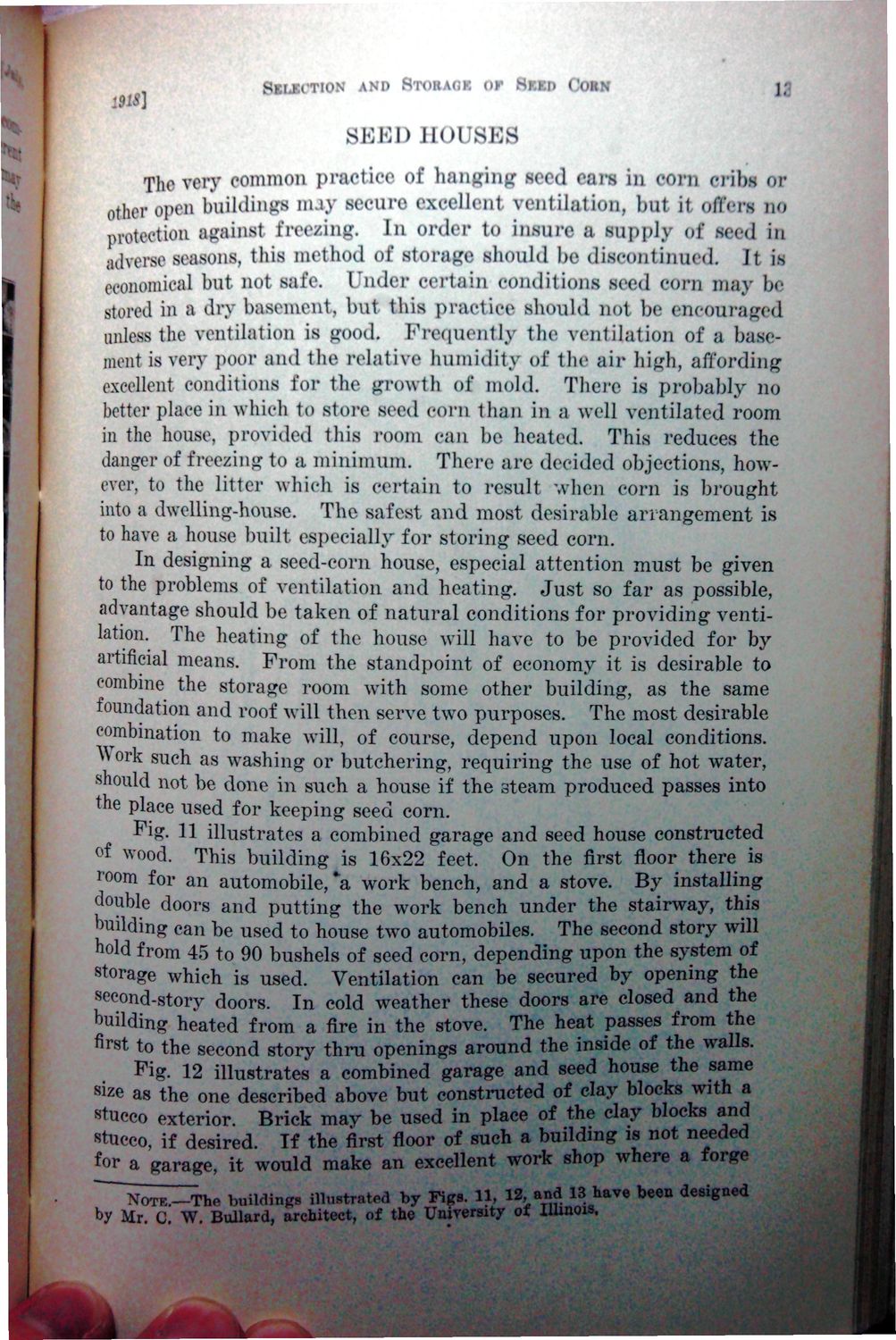| |
| |
Caption: War Publications - WWI Compilation 1923 - Article 44
This is a reduced-resolution page image for fast online browsing.

EXTRACTED TEXT FROM PAGE:
SWJCITION AND 8T0RA0I OF 8 1918) 4 4l COIN I; SK Kl) HOUSES The very common practice of hanging seed ears in corn cribs or othor open buildings may secure excellent ventilation, but it often no protection against freezing, h i order to insure a supply of seed in adverse seasons, this method of storage should be discontinued. Jt is economical but not safe. Under certain conditions seed corn may be stoml in a dry basement, but this practice should not be encouraged unless the ventilation is good. Frequently the ventilation of a basement is very poor and the relative humidity of the air high, affording excellent conditions for the growth of mold. There is probably no better place in which to store seed corn than in a well ventilated room in the house, provided this room can he heated. This reduces the danger of freezing to a minimum. There are decided objections, however, to the litter which is certain to result when corn is brought into a dwelling-house. The safest and most desirable arrangement is to have a house built especially for storing seed corn. In designing a seed-corn house, especial attention must be given to the problems of ventilation and heating. J u s t so far as possible, advantage should be taken of natural conditions for providing ventilation. The heating of the house wall have to be provided for by artificial means. From the standpoint of economy it is desirable to combine the storage room with some other building, as the same foundation and roof will then serve two purposes. The most desirable combination to make will, of course, depend upon local conditions. r > ork such as w ashing or butchering, requiring the use of hot water, > should not be done in such a house if the steam produced passes into the place used for keeping seed corn. Fig. 11 illustrates a combined garage and seed house constructed of wood. This building is 16x22 feet. On the first floor there is room for an automobile, *a work bench, and a stove. By installing double doors and putting the work bench under the stairway, this building can be used to house two automobiles. The second story will hold from 45 to 90 bushels of seed corn, depending upon the system of storage which is used. Ventilation can be secured by opening the second-story doors. In cold weather these doors are closed and the building heated from a fire in the stove. The heat passes from the fir st to the second story thru openings around the inside of the walls. Fig. 12 illustrates a combined garage and seed house the same size as the one described above but constructed of clay blocks with a stucco exterior. Brick may be used in place of the clay blocks and stucco, if desired. If the first floor of such a building is not needed f or a garage, it would make an excellent work shop where a forge N ^ Z T h e building illustrate by Figs. 1 1 12, and 13 have been designed • tht\ University oi Illinois, M ^ H ^ ^ ^ ^ ^ B ^ ^ H ^ H p ' : •
| |